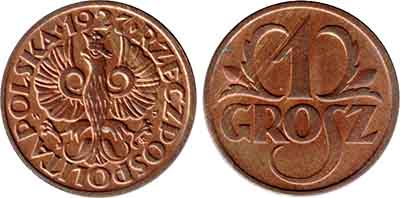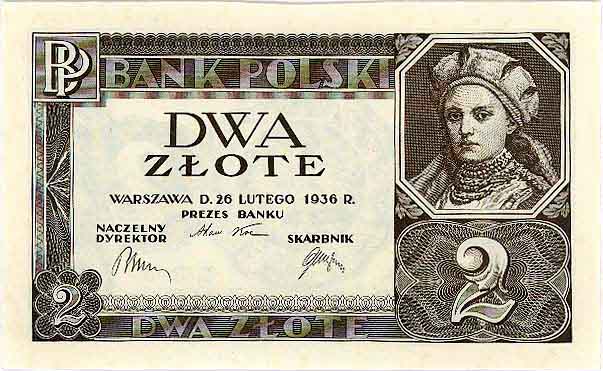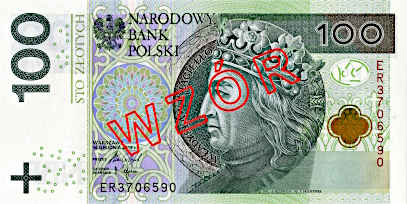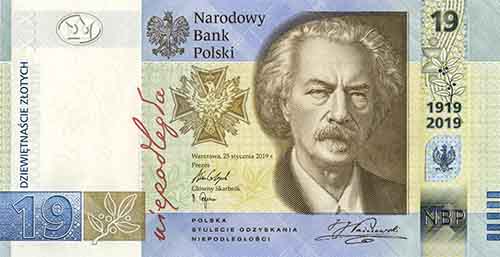Whoever has money,
rides on the the bus.
And whoever doesn't have money,
runs after it.
This scout marching song, sung by me and my team in the 1950s, makes me realize how important a role money plays in the lives of individuals and entire societies. It may not make you happy, but you can't live without it.
The Oldest Means of Payment
With the development of civilization and the division of social roles, there was an exchange of goods and services that required the assessment of their value. It is popularly believed that money was created to replace barter. Initially, various means of payment were used [for barter], e.g.; plants or farm animals.
Barter, a type of original trade, was simplified and improved. An example of this can be Mesopotamia (around 3000 BC), in whose cities crops were stored, and for depositing them — selling them — a clay tablet was issued, which could be used to settle accounts in the temple. These tablets are the original depository receipts that will eventually give rise to paper money.
Over time, consumer products were replaced by metals — first, base metals (bronze, copper, iron), then noble metals (silver and gold). Metals guaranteed durability and their dimensions, much smaller than those of the goods, made transportation much easier. In trade between city-states in Mesopotamian times, gold and silver were used as means of payment.
The rise of coins
Over time, metals began to become a nuisance. The dimensions of metal pieces were not always the same, gold or silver bars were usually large, and weighing and dividing them into smaller pieces usually took a lot of time. Therefore, there was a practice of dividing these bars of gold, silver or other precious metals, which turned out to be advantageous.
These metals began to be cut into small pieces, which usually took the shape of solid or flattened balls. Over time, seals of famous rulers began to be stamped on them. This prevented counterfeiting (reducing the actual amount of a given metal in a piece) and spoiling, reducing the actual value of the means of payment. After stamping the appropriate images, the owner of the stamped pieces of metal was aware and certain of the value of the received "money".
For hundreds of years, metal discs that served as money were made of several metals, such as bronze, silver, and gold. Over time, the metal minting system crystallized to use two metals: gold and silver. Such metal discs with images embossed in them were called coins.
The original coin creators were probably the Phoenicians. When such private prime-coins appeared, people were only one step away from introducing money minted by state authorities to the market.
Money of the First Polish Republic
The history of the Polish currency is as turbulent as the history of our statehood, and its rhythm was determined primarily by wars, uprisings and political upheavals.
The Polish state was established at a time of advanced economic development in Europe, so trade was based on metal coin currency. These were probably Roman or Arab coins brought by merchants. During the reign of the Piast dynasty, until the economic reforms of Casimir the Great, the Polish currency was the denar. During the division of the districts (11th-13th centuries), each Polish ruler had the ambition to mint his own coin. The first denars were probably minted during the times of Mieszko I. Money is also part of the history of the state and nation. The denar from the times of Bolesław the Brave contains the inscription "Princes Poloniae" and it is the oldest inscription with the name of our country. Other district princes also minted their denars: Bolesław the Bold, Bolesław the Wrymouth, and Władysław Herman. However, Władysław Loketek's gold ducat went down in history because it contained "gold" ("złoty" in Polish - ed.) in its name.
The first real monetary reform was carried out by Casimir the Great. He based it on the Czech grosh, which is important in Europe, and introduced the first unified Polish coin. Of course, that penny had a completely different value than the modern penny and due to the lack of the noble raw material silver, the number of minted coins was limited, but the Polish name of the coin, "grosz," has survived to this day.

1 grosz from 1927 (Source: Wikipedia)
The Jagiellonian era, with which we associate the golden age in culture, was not golden in the field of finance. The reforms of the last Piast were not continued and considerable chaos was allowed in the work of the mints. In 1496, the parliament in Piotrków, on the order of King Olbracht, established the "zloty", whose value was equal to 30 groszy. During the times of John Casimir, in 1663, a coin minted by Andrzej Tynf — the manager of the royal mints — was put into circulation and called "tynf". It was the period of wars with the Swedes and the money was corrupt and weak, but it remained in circulation and became embedded in the language, in the saying "a good joke is worth a tynf".
Another attempt at reform was made by the last Polish king, Stanisław Poniatowski. He withdrew poor quality money from circulation and introduced solid silver coins, on which the name "zloty" appeared in Polish for the first time. The first issue of paper money was made in 1794. However, it did not matter much, because Poland soon lost its independence and the invaders slowly eliminated Polish accents on money, until they replaced it with their own rubles, crowns and marks.
The Importance of Władysław Grabski's Reform
After Poland regained independence, the German mark, the Austrian crown and the Polish mark (in the Kingdom of Poland) were initially in circulation in the territory of the Second Polish Republic. One of the first serious economic problems was to organize finances through tax reform and currency reform. Already, on November 28, 1919, the Sejm of the Second Polish Republic established that the Polish currency would be the "zloty", consisting of 100 groszy. This was due to historical reasons and the fact that the zloty was popular and known in the world.
Political conditions — the war to establish Poland's borders and the need for reform in the Polish administration — did not allow the immediate implementation of the plans. In December 1918, by decree of the Head of State, Józef Piłsudski, the Polish mark became legal tender. In 1919, Austrian crowns were withdrawn, and in 1920 and 1922, German marks were withdrawn. The young country's economic problems resulted in hyperinflation and social unrest. Polish economists, headed by the Minister of Treasury and later Prime Minister Władysław Grabski, presented a three-year plan to sort out the financial situation. The condition for success was the need to balance the budget. This was achieved in various ways; through spending cuts in public administration, under-subsidizing enterprises, tax discipline, etc. The costs of the reform were severe and painful. They burdened the entire society, but especially the wealthier classes.

Newly introduced currency, Polish zloty — 2 Polish zlotys from 1936 (Source: Wikipedia)
In February 1924, budget balance was achieved and the issuance of the Polish mark was discontinued. The zloty became the state currency. It was built on quite solid foundations. About thirty percent of the money in circulation was backed by gold and other foreign currencies. The following denominations were in circulation: 1, 2, 5, 10, 20, 50 groszy, and banknotes of 5, 10, 20, 50, 100 and 500 zlotys. Interestingly, the banknotes were already secured with watermarks at that time. It is worth noting that our zloty was a strong currency, equal to the value of the Swiss franc at the time.
Polish Zloty or Euro?
For twenty years, our national currency, our zloty, and its issue by Polish mints, under the supervision of the National Bank of Poland, served the Polish economy well. The period of World War II and various political turmoil following it, such as the sudden (prepared in secret) money exchange in 1950, the dependence of the Polish zloty on the policy of Comecon (Council for Mutual Economic Assistance), and — in fact — on the ruble, great inflation after the political transformation in the 1990s, and Leszek Balcerowicz's reform, greatly impoverished Poles, but accession to the European Union (2004) and the opening of European markets to Poland allowed the Polish economy to develop rapidly and equalize the gap with the richest EU countries.

The current 100-złoty banknote (Source: National Bank of Poland)
Poles living and working abroad have a significant share in all economic struggles. They always support their homeland financially (e.g. the role of the Polish community in regaining independence, Smulski's bank in Chicago), invest in Poland, and support their families financially.
Currently, Poland faces the dilemma of adopting the common EU currency, the euro. The arguments in favor of adoption are trade and economic enablement, while the loss of some political sovereignty speaks against it. One hundred years of struggle for political and economic independence, symbolized by our national currency, is a period of at least four-to-five generations. If we have achieved a peace victory in history, it must be relished. So let's wish the Polish zloty, which has successfully survived 100 years, many more centuries to come.

The banknote from the "Independence" series. Date on the banknote: January 25, 2019, is the 100th anniversary of the establishment of PWPW (the national mint and banknote printing house). The face value of PLN 19 denotes the year of establishment of the printing house. (Source: Wikipedia)









